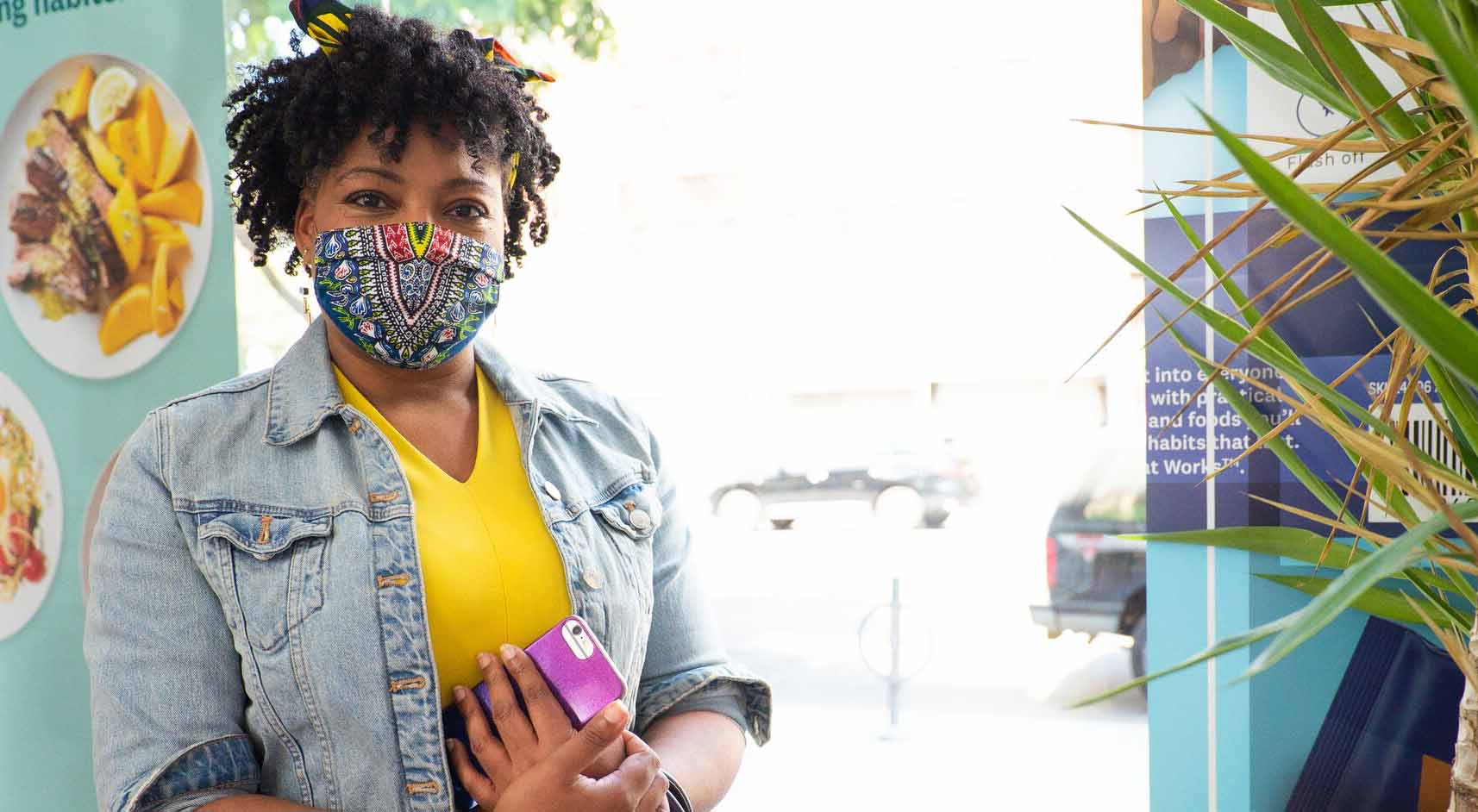How to care for your face masks


Face masks are part of our reality now, with many communities across Canada making them mandatory in shared public spaces. And as children head back to school in some areas, many of us are going to be wearing masks even more often.
As we continue to wear these protective face coverings, we need to ensure we’re keeping them clean and dry so they can continue to protect us from germs, namely the coronavirus that causes COVID-19. Here are some tips to do just that.
Don’t touch the front of your mask
You may have heard this tip before, but it’s really important. The front of the mask is the germiest part, so you want to avoid touching it.
“In order to avoid spreading germs and to make sure that your mask stays as clean as possible, try not to touch the mask itself too often,” says Caleb Backe, a health and wellness expert for Maple Holistics. “Wherever possible, use the strings to handle the mask, as this reduces your chances of spreading germs from your hands to high-risk areas like your mouth or nose.”
Keep ‘em clean
“It might sound obvious, but even reusable fabric face masks should be washed more frequently than people think,” Backe says. “It’s recommended to wash your face mask once a week, but if you want to make sure there is no spread of germs or you’re in a close-proximity environment, like a school, it’s best to use a new face mask at the start of each day. This means more frequent washing to make sure that you’re not accidentally re-exposing yourself to germs daily.”
Board-certified dermatologist Tsippora Shainhouse, MD, FAAD, agrees masks should be washed after each wear, if possible, especially if they become damp or wet from normal breathing and talking.
For kids going back to school this year, Shainhouse, who works in private practice at SkinSafe Dermatology and Skin Care in Beverly Hills, suggests packing a spare in their schoolbag so they can swap out their mask if it gets damp throughout the day. “This will help prevent them from developing skin irritation and rashes on their lower face,” she explains.
Washing
“Washing your mask helps to physically remove bacteria, viruses and yeast, as well as skin oils, makeup and skincare products that build up on the fabric during normal wear,” Shainhouse says. “This helps to prevent skin infection, skin irritation and even acne (or maskne) breakouts.”
You can throw your fabric masks in with your laundry or you can hand-wash them, whatever’s easiest for you.
- Hot water: “Hot water is best, to help kill any organisms lingering on the fabric,” Shainhouse says. “Choose the warmest water temperature recommended for your mask fabric.”
- Consider fragrance/dye-free detergent: Shainhouse suggests going fragrance- and dye-free to minimize potential irritant or allergic contact dermatitis. Fragrances and dyes can become concentrated and triggering with continuous skin contact, she says, especially when the fabric becomes damp from wear. On that note, you may also want to skip the fabric softener if you are prone to acne and skin allergies. Fabric softener “coats the fabric and can clog pores and trigger acne breakouts or contact allergies,” Shainhouse explains. On the flip side though, if you have dry or sensitive skin or even eczema, fabric softener could help make the material of your mask smoother and less irritating on your skin, but you’ll still probably want to look for a product without fragrances or dyes.
- To bleach or not to bleach: If you’re adding your mask to your regular laundry load, Shainhouse says you don’t need to add bleach to the wash. But if you are hand-washing your mask, the U.S. Centers for Disease Control (CDC) recommends adding bleach to the water (four teaspoons per quart of water) for a five-minute soak. Then you can wash your mask with detergent/soap and rinse. If you are using bleach, Shainhouse points out that “bleach alternatives that do not fade your clothing may not have the same germicidal effect as original bleach – check the label if that is your goal.”
Drying
After washing your mask, the next step, of course, is drying it. There are few different ways to do this, but the best way is to throw it in the dryer with the rest of your laundry.
“Machine dry on high heat is ideal, to help kill any persistent organisms on the fabric,” says Shainhouse.
If the fabric can’t be machine-dried or you don’t have access to a dryer, Shainhouse suggests laying the mask flat or hanging it to dry.
You’ll want to make sure it’s completely dry before you wear it again. “A damp mask can be a harbour for bacterial and mould/yeast growth, and make the fabric more permeable to virus-containing respiratory particles,” she says.
You may also want to try drying the mask in direct sunlight, she adds, “as UVC rays have been demonstrated to help kill coronavirus.”